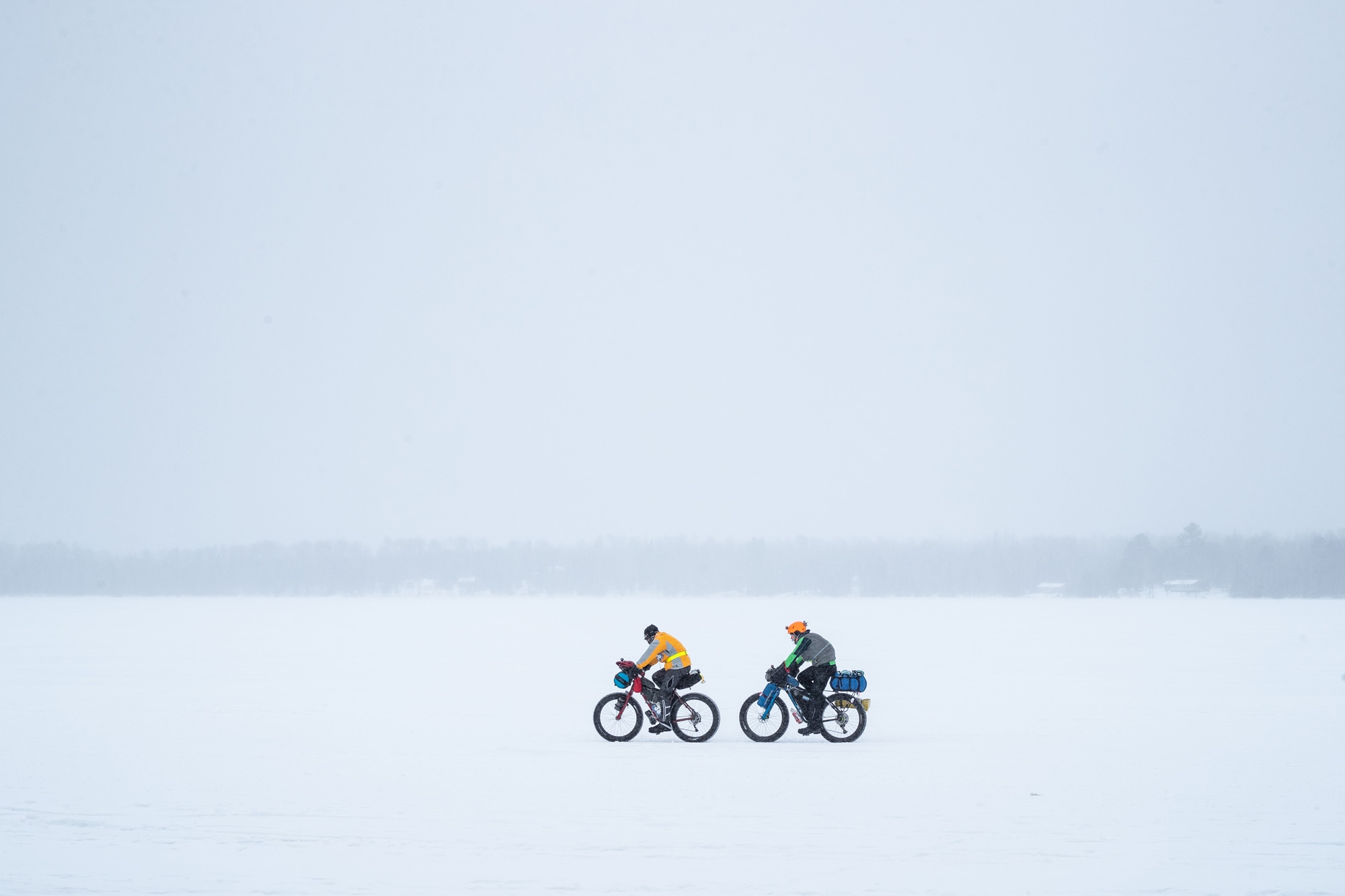Early on Monday, Jan. 28, temperatures dipped to minus 10 in International Falls, Minnesota. Don Gabrielson, a 52-year-old rear admiral Navy officer who lives in Seattle, prepared for the worst by wrapping duct tape around his balaclava to seal out the bitter cold as he prepared to cycle for 135 miles through the Northern Minnesota backcountry in the Arrowhead 135, an ultramarathon that traces the Arrowhead State Snowmobile Trail in winter.
Gabrielson joined 145 other competitors preparing to cycle, run, kicksled or ski across a snowy, windblown expanse from International Falls, Minnesota, to the Fortune Bay Casino in Tower. Temperatures during the Arrowhead 135 frequently hover at or below zero degrees, leading members of the ultra community to dub it one of the world’s toughest. Gabrielson knew what he was in for—his last go-round on the course was in 2009. But with a polar vortex gripping the Midwest with ice-cold temperatures, this year’s Arrowhead would require even greater heroics than usual.
Only a few hours into Gabrielson’s trek, the Arrowhead was living up to its reputation. “My water bottle had frozen shut,” he said. “I was planning to add more water to drink mixes, but I couldn’t, so in the first half of the race I lost a third of my liquid calories I was counting on.”
The hiccup slowed his progress as he slogged through the undulating, icy terrain on his fat bike. With each hill, his energy seemed to wane. As the temperatures approached minus 20, Gabrielson persisted, hoping to make it to the first of three checkpoints about 35 miles in, where he could reassess his situation. “I figured out I had forgotten to put [lip balm] around the threads of the cap, which would have stopped it from freezing,” he said.
After eating and regaining some strength, Gabrielson pedaled deeper into the frozen wilderness. With 15 miles left, he noticed his core temperature seemed low and his hands were frigid, despite his thick gloves and pogies. The biting wind, too, had found its way through his face mask. By the time he crossed the finish line around 4am on Tuesday, Jan. 29—21 hours after he had begun—parts of his cheeks showed signs of frostnip.
“Each decision you make affects something else,” he said. The lack of calories early in the race impacted him every step along the way, he said, though he still managed to finish 15th overall, his third finish and fourth attempt on the course.
“There are very few people who come to win,” said Ken Krueger, who co-directs the race with his wife, Jackie. “They are coming to finish.”
To qualify to compete in the Arrowhead 135, athletes must have completed an ultramarathon longer than 100 miles, and winter experience is a plus. Each year, about 15 competitors forgo support, meaning they check in at checkpoints but abstain from the food and water the organizers make available—and even sacrifice time to warm up before pressing on into the icy tundra.
Some years, as few as 20 percent of competitors finish. Other years, the number has been as high as 82 percent. This year, there were 52 finishers out of 146, or 36 percent. Krueger attributed this to the extreme weather.
“There was a nervous energy among everyone, mixed with fear,” he said. “But they come for this. If you get an easy year, they almost feel cheated out of the race. They definitely want a challenge.”
Traveling 135 miles under one’s own power with minimal stops is grueling, competitors say, but extreme low temperatures add another challenge—maintaining one’s gear is almost impossible as removing gloves can lead to frostbite, and sweating too much can result in life-threatening hypothermia. That’s why the Kruegers require all participants to carry an emergency kit with fuel, a stove and pot (to boil water), matches and a sleeping bag suited to minus 20.
“We only have three checkpoints,” he said. “At two, there is food and water, and the other there is only water.”
Volunteers patrol the trail throughout the three-day event to ensure the safety of the participants. But for much of the time, competitors are trudging through the elements alone, often through dusk with the aid of a headlamp. Racers are expected to finish within 60 hours—those who take longer receive a DNF (Did Not Finish), said Neil Beltchenko, a 31-year-old unsupported bike competitor from Minneapolis. For unsupported competitors, there’s no help—or rest for the weary—at the checkpoints.
“You have to boil your own water, bring your food and from start to finish support yourself through the whole race,” he said.
This was Beltchenko’s second year competing after receiving a DNF in a previous 2014 attempt. This year, his time of 13 hours and 27 minutes was enough to clinch the fastest unsupported time and second overall. In front of him was Jordan Wakely of Grayling, Michigan, who set a new course record, finishing in just 11 hours and 43 minutes. Beltchenko feels lucky to have finished fast enough to outpace the worst of the cold weather.
“Yesterday morning we watched someone come in with a minus 45-degree wind chill,” he said. “They are definitely more hardcore than I am.”
